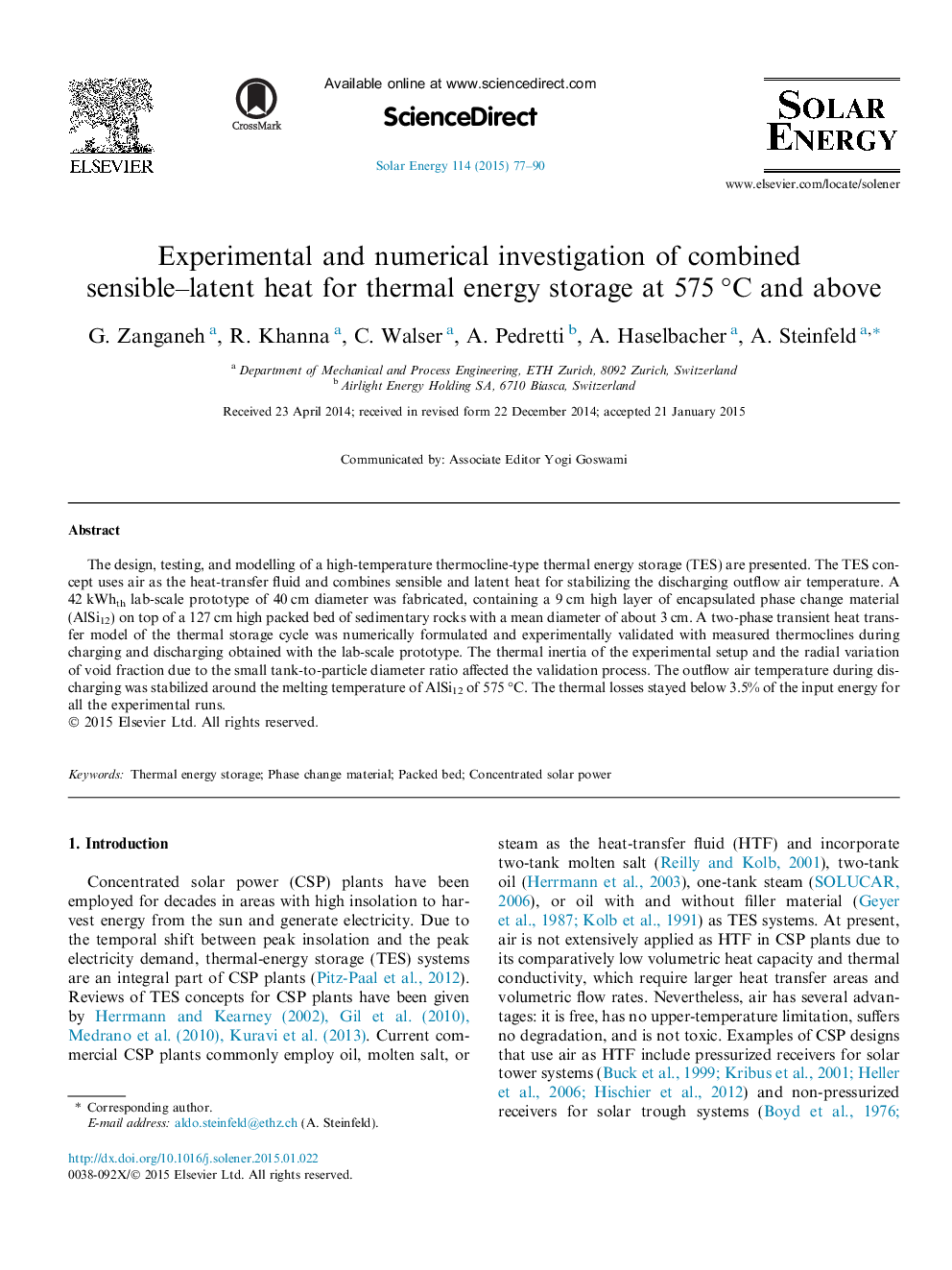| Article ID | Journal | Published Year | Pages | File Type |
|---|---|---|---|---|
| 7937946 | Solar Energy | 2015 | 14 Pages |
Abstract
The design, testing, and modelling of a high-temperature thermocline-type thermal energy storage (TES) are presented. The TES concept uses air as the heat-transfer fluid and combines sensible and latent heat for stabilizing the discharging outflow air temperature. A 42 kWhth lab-scale prototype of 40 cm diameter was fabricated, containing a 9 cm high layer of encapsulated phase change material (AlSi12) on top of a 127 cm high packed bed of sedimentary rocks with a mean diameter of about 3 cm. A two-phase transient heat transfer model of the thermal storage cycle was numerically formulated and experimentally validated with measured thermoclines during charging and discharging obtained with the lab-scale prototype. The thermal inertia of the experimental setup and the radial variation of void fraction due to the small tank-to-particle diameter ratio affected the validation process. The outflow air temperature during discharging was stabilized around the melting temperature of AlSi12 of 575 °C. The thermal losses stayed below 3.5% of the input energy for all the experimental runs.
Related Topics
Physical Sciences and Engineering
Energy
Renewable Energy, Sustainability and the Environment
Authors
G. Zanganeh, R. Khanna, C. Walser, A. Pedretti, A. Haselbacher, A. Steinfeld,
